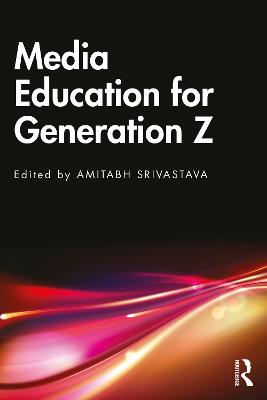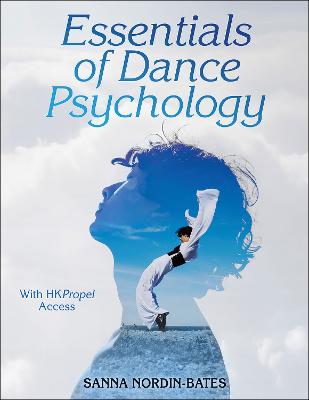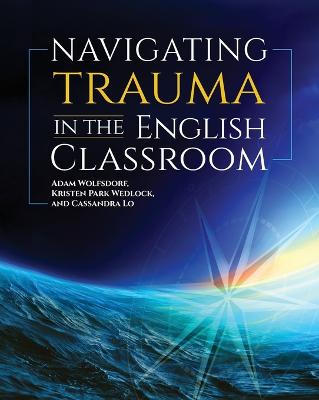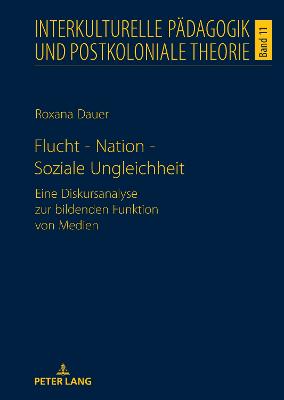Elementary Dance Education
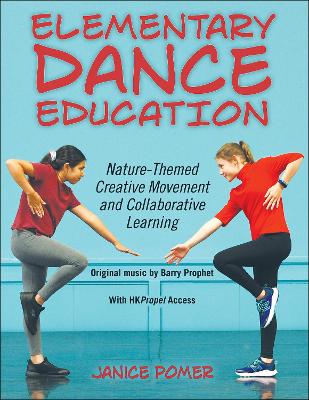 portes grátis
portes grátis
Elementary Dance Education
Nature-Themed Creative Movement and Collaborative Learning
Pomer, Janice
Human Kinetics Publishers
11/2022
296
Mole
Inglês
9781718202955
15 a 20 dias
862
Descrição não disponível.
Chapter 1. Basic Elements of Dance
The first chapter contains five foundation exercises that have a series of pedagogic variations to deepen students' understanding of the basic elements of dance. Because many of you are working with novice movers, it's important that you introduce these exercises to your students before moving on to the other exercises in this book. The sixth exercise, Collective Observation, reinforces the importance of discussion and shared observations introduced in the five fundamental exercises. This exercise expands students' observation skills and strengthens trust between fellow students. The process will support students throughout their artistic journey and can be applied to subjects across the curriculum. 1.1 Exploring Shapes
1.2 Exploring Motion
1.3 Exploring Time
1.4 Exploring Space
1.5 Exploring Energy
1.6 Collective Observation
Chapter 2. Plants
The second chapter explores a variety of growing things that have, or will have, roots. Differing shapes, textures, and environments played a part in the selection of this grouping. On-the-spot movement dynamics will be the common denominator for much of the choreography. Each plant (or seed) has unique characteristics that can inspire dynamic movement phrases and choreography. 2.1 Trees
2.2 Flowers
2.3 Vines
2.4 Tall Grasses
2.5 The Three Sisters
Chapter 3. Animals
Each animal-inspired exercise begins with a simple 16-beat foundation dance based on actions associated with an animal in a specific animal grouping. The foundation dance is used to explore some of the animals' behavioral traits. Students are then encouraged to create their own dances inspired by other animals within the specific group. For example, the exercise Horns, Antlers, Hooves, and Herds presents a foundation dance inspired by caribou migration and later invites students to create dances inspired by buffalo and musk ox as well as gazelles and antelope. 3.1 Birds of a Feather
3.2 Wildcats
3.3 Horns, Antlers, Hooves, and Herds
3.4 Reptiles With Scales and Shells
3.5 Spiders and Insects
3.6 Rodents
3.7 Animal Anthology (Kindergarten Through Grade 3)
3.8 Endangered Species (Grades 4 Through 6)
Chapter 4. Water
We are all bodies of water. When we are born, our bodies contain 75 percent water, which is almost the same percentage of water that covers the earth. Water is in the ground, in the air, and in the food we eat. The movement exercises in this chapter examine some of the many ways water moves and influences us: its cycles and currents and its life-giving and destructive forces. Each of the exercises in this chapter can be extended into in-depth choreographic pieces for novice and experienced movers. 4.1 Water Words
4.2 Waves
4.3 Frost and Snow
4.4 Rain
4.5 Water Cycle
4.6 Drought
4.7 Water Pollution (Grades 4 Through 6)
4.8 Wetland Habitats
Chapter 5. Earth
The exercises in this chapter are based on surface textures and shapes, and underground earth forces that can be felt and seen. These movement explorations will draw students' attention to the ways our planet supports us, the way they travel upon it, and the internal pressures that continue to reshape it. 5.1 Earth Words
5.2 Terrains
5.3 Rocks and Sand
5.4 Tectonic Plates
5.5 Volcanoes
5.6 Mapping the Land
Chapter 6. Sky
Human beings have been studying the sky since the dawn of mankind; winds and weather impact our daily lives, and the stars and night skies continue to inspire us to dream of other worlds. In this chapter, students will look to the skies from multiple perspectives: personal observations, scientific knowledge, and traditional folktales or origin stories created to explain eclipses and the distant planets. 6.1 Clouds
6.2 Thunder and Lightning
6.3 Painting the Sky
6.4 Sun and Moon
6.5 Eclipses
6.6 Gravitational Forces
6.7 The Planets
Chapter 7. People
Humans are mammals, and like mammals and other living things, humans travel, have families, build communities, and communicate. In this chapter, students will revisit some of the previous exercises and examine how they relate to humans, specifically how the actions of their families, friends, and communities are closely linked to the patterns that govern plants, animals, water, earth, and sky. Unlike previous exercises, in this chapter, there is minimal instruction to guide you. The first two exercises provide direction, but after that you and your class decide how to explore, structure, and create the dances. People and Plants7.1 Revisiting Maple Keys
7.2 Revisiting the Three SistersPeople and Animals7.3 Revisiting Teamwork
7.4 Revisiting Herd MigrationsPeople and Water7.5 Revisiting Snow
7.6 Revisiting the Water Cycle, Drought, and FloodsPeople and Earth7.7 Revisiting Tectonic Plates
7.8 Revisiting VolcanoesPeople and Sky7.9 Revisiting the Moon
7.10 Revisiting Our Planet
Chapter 8. Other Wonders
The world is filled with wonders. The final chapter contains a list of fascinating natural wonders to explore. PlantsCacti and the Desert Environment, Carnivorous Plants, Ferns, Mushrooms and FungiAnimalsFlightless Birds; The Platypus, Jellyfish, and Other Unique Animals; Animal Metamorphosis; Animal ArchitectsWaterTsunamis, Subterranean Rivers, Hurricanes and Typhoons, IcebergsEarthThe Carbon Cycle, Earth's Core, Gemstones, Fossil Sites and Tar PitsSkyComets, Constellations, Supernovas, Our Galaxy
The first chapter contains five foundation exercises that have a series of pedagogic variations to deepen students' understanding of the basic elements of dance. Because many of you are working with novice movers, it's important that you introduce these exercises to your students before moving on to the other exercises in this book. The sixth exercise, Collective Observation, reinforces the importance of discussion and shared observations introduced in the five fundamental exercises. This exercise expands students' observation skills and strengthens trust between fellow students. The process will support students throughout their artistic journey and can be applied to subjects across the curriculum. 1.1 Exploring Shapes
1.2 Exploring Motion
1.3 Exploring Time
1.4 Exploring Space
1.5 Exploring Energy
1.6 Collective Observation
Chapter 2. Plants
The second chapter explores a variety of growing things that have, or will have, roots. Differing shapes, textures, and environments played a part in the selection of this grouping. On-the-spot movement dynamics will be the common denominator for much of the choreography. Each plant (or seed) has unique characteristics that can inspire dynamic movement phrases and choreography. 2.1 Trees
2.2 Flowers
2.3 Vines
2.4 Tall Grasses
2.5 The Three Sisters
Chapter 3. Animals
Each animal-inspired exercise begins with a simple 16-beat foundation dance based on actions associated with an animal in a specific animal grouping. The foundation dance is used to explore some of the animals' behavioral traits. Students are then encouraged to create their own dances inspired by other animals within the specific group. For example, the exercise Horns, Antlers, Hooves, and Herds presents a foundation dance inspired by caribou migration and later invites students to create dances inspired by buffalo and musk ox as well as gazelles and antelope. 3.1 Birds of a Feather
3.2 Wildcats
3.3 Horns, Antlers, Hooves, and Herds
3.4 Reptiles With Scales and Shells
3.5 Spiders and Insects
3.6 Rodents
3.7 Animal Anthology (Kindergarten Through Grade 3)
3.8 Endangered Species (Grades 4 Through 6)
Chapter 4. Water
We are all bodies of water. When we are born, our bodies contain 75 percent water, which is almost the same percentage of water that covers the earth. Water is in the ground, in the air, and in the food we eat. The movement exercises in this chapter examine some of the many ways water moves and influences us: its cycles and currents and its life-giving and destructive forces. Each of the exercises in this chapter can be extended into in-depth choreographic pieces for novice and experienced movers. 4.1 Water Words
4.2 Waves
4.3 Frost and Snow
4.4 Rain
4.5 Water Cycle
4.6 Drought
4.7 Water Pollution (Grades 4 Through 6)
4.8 Wetland Habitats
Chapter 5. Earth
The exercises in this chapter are based on surface textures and shapes, and underground earth forces that can be felt and seen. These movement explorations will draw students' attention to the ways our planet supports us, the way they travel upon it, and the internal pressures that continue to reshape it. 5.1 Earth Words
5.2 Terrains
5.3 Rocks and Sand
5.4 Tectonic Plates
5.5 Volcanoes
5.6 Mapping the Land
Chapter 6. Sky
Human beings have been studying the sky since the dawn of mankind; winds and weather impact our daily lives, and the stars and night skies continue to inspire us to dream of other worlds. In this chapter, students will look to the skies from multiple perspectives: personal observations, scientific knowledge, and traditional folktales or origin stories created to explain eclipses and the distant planets. 6.1 Clouds
6.2 Thunder and Lightning
6.3 Painting the Sky
6.4 Sun and Moon
6.5 Eclipses
6.6 Gravitational Forces
6.7 The Planets
Chapter 7. People
Humans are mammals, and like mammals and other living things, humans travel, have families, build communities, and communicate. In this chapter, students will revisit some of the previous exercises and examine how they relate to humans, specifically how the actions of their families, friends, and communities are closely linked to the patterns that govern plants, animals, water, earth, and sky. Unlike previous exercises, in this chapter, there is minimal instruction to guide you. The first two exercises provide direction, but after that you and your class decide how to explore, structure, and create the dances. People and Plants7.1 Revisiting Maple Keys
7.2 Revisiting the Three SistersPeople and Animals7.3 Revisiting Teamwork
7.4 Revisiting Herd MigrationsPeople and Water7.5 Revisiting Snow
7.6 Revisiting the Water Cycle, Drought, and FloodsPeople and Earth7.7 Revisiting Tectonic Plates
7.8 Revisiting VolcanoesPeople and Sky7.9 Revisiting the Moon
7.10 Revisiting Our Planet
Chapter 8. Other Wonders
The world is filled with wonders. The final chapter contains a list of fascinating natural wonders to explore. PlantsCacti and the Desert Environment, Carnivorous Plants, Ferns, Mushrooms and FungiAnimalsFlightless Birds; The Platypus, Jellyfish, and Other Unique Animals; Animal Metamorphosis; Animal ArchitectsWaterTsunamis, Subterranean Rivers, Hurricanes and Typhoons, IcebergsEarthThe Carbon Cycle, Earth's Core, Gemstones, Fossil Sites and Tar PitsSkyComets, Constellations, Supernovas, Our Galaxy
Este título pertence ao(s) assunto(s) indicados(s). Para ver outros títulos clique no assunto desejado.
Dance; dance education; elementary dance; primary school dance; K-6 dance; elementary dance music; elementary dance lesson plans; elementary dance videos; elementary dance curriculum; elementary dance activities; physical education dance
Chapter 1. Basic Elements of Dance
The first chapter contains five foundation exercises that have a series of pedagogic variations to deepen students' understanding of the basic elements of dance. Because many of you are working with novice movers, it's important that you introduce these exercises to your students before moving on to the other exercises in this book. The sixth exercise, Collective Observation, reinforces the importance of discussion and shared observations introduced in the five fundamental exercises. This exercise expands students' observation skills and strengthens trust between fellow students. The process will support students throughout their artistic journey and can be applied to subjects across the curriculum. 1.1 Exploring Shapes
1.2 Exploring Motion
1.3 Exploring Time
1.4 Exploring Space
1.5 Exploring Energy
1.6 Collective Observation
Chapter 2. Plants
The second chapter explores a variety of growing things that have, or will have, roots. Differing shapes, textures, and environments played a part in the selection of this grouping. On-the-spot movement dynamics will be the common denominator for much of the choreography. Each plant (or seed) has unique characteristics that can inspire dynamic movement phrases and choreography. 2.1 Trees
2.2 Flowers
2.3 Vines
2.4 Tall Grasses
2.5 The Three Sisters
Chapter 3. Animals
Each animal-inspired exercise begins with a simple 16-beat foundation dance based on actions associated with an animal in a specific animal grouping. The foundation dance is used to explore some of the animals' behavioral traits. Students are then encouraged to create their own dances inspired by other animals within the specific group. For example, the exercise Horns, Antlers, Hooves, and Herds presents a foundation dance inspired by caribou migration and later invites students to create dances inspired by buffalo and musk ox as well as gazelles and antelope. 3.1 Birds of a Feather
3.2 Wildcats
3.3 Horns, Antlers, Hooves, and Herds
3.4 Reptiles With Scales and Shells
3.5 Spiders and Insects
3.6 Rodents
3.7 Animal Anthology (Kindergarten Through Grade 3)
3.8 Endangered Species (Grades 4 Through 6)
Chapter 4. Water
We are all bodies of water. When we are born, our bodies contain 75 percent water, which is almost the same percentage of water that covers the earth. Water is in the ground, in the air, and in the food we eat. The movement exercises in this chapter examine some of the many ways water moves and influences us: its cycles and currents and its life-giving and destructive forces. Each of the exercises in this chapter can be extended into in-depth choreographic pieces for novice and experienced movers. 4.1 Water Words
4.2 Waves
4.3 Frost and Snow
4.4 Rain
4.5 Water Cycle
4.6 Drought
4.7 Water Pollution (Grades 4 Through 6)
4.8 Wetland Habitats
Chapter 5. Earth
The exercises in this chapter are based on surface textures and shapes, and underground earth forces that can be felt and seen. These movement explorations will draw students' attention to the ways our planet supports us, the way they travel upon it, and the internal pressures that continue to reshape it. 5.1 Earth Words
5.2 Terrains
5.3 Rocks and Sand
5.4 Tectonic Plates
5.5 Volcanoes
5.6 Mapping the Land
Chapter 6. Sky
Human beings have been studying the sky since the dawn of mankind; winds and weather impact our daily lives, and the stars and night skies continue to inspire us to dream of other worlds. In this chapter, students will look to the skies from multiple perspectives: personal observations, scientific knowledge, and traditional folktales or origin stories created to explain eclipses and the distant planets. 6.1 Clouds
6.2 Thunder and Lightning
6.3 Painting the Sky
6.4 Sun and Moon
6.5 Eclipses
6.6 Gravitational Forces
6.7 The Planets
Chapter 7. People
Humans are mammals, and like mammals and other living things, humans travel, have families, build communities, and communicate. In this chapter, students will revisit some of the previous exercises and examine how they relate to humans, specifically how the actions of their families, friends, and communities are closely linked to the patterns that govern plants, animals, water, earth, and sky. Unlike previous exercises, in this chapter, there is minimal instruction to guide you. The first two exercises provide direction, but after that you and your class decide how to explore, structure, and create the dances. People and Plants7.1 Revisiting Maple Keys
7.2 Revisiting the Three SistersPeople and Animals7.3 Revisiting Teamwork
7.4 Revisiting Herd MigrationsPeople and Water7.5 Revisiting Snow
7.6 Revisiting the Water Cycle, Drought, and FloodsPeople and Earth7.7 Revisiting Tectonic Plates
7.8 Revisiting VolcanoesPeople and Sky7.9 Revisiting the Moon
7.10 Revisiting Our Planet
Chapter 8. Other Wonders
The world is filled with wonders. The final chapter contains a list of fascinating natural wonders to explore. PlantsCacti and the Desert Environment, Carnivorous Plants, Ferns, Mushrooms and FungiAnimalsFlightless Birds; The Platypus, Jellyfish, and Other Unique Animals; Animal Metamorphosis; Animal ArchitectsWaterTsunamis, Subterranean Rivers, Hurricanes and Typhoons, IcebergsEarthThe Carbon Cycle, Earth's Core, Gemstones, Fossil Sites and Tar PitsSkyComets, Constellations, Supernovas, Our Galaxy
The first chapter contains five foundation exercises that have a series of pedagogic variations to deepen students' understanding of the basic elements of dance. Because many of you are working with novice movers, it's important that you introduce these exercises to your students before moving on to the other exercises in this book. The sixth exercise, Collective Observation, reinforces the importance of discussion and shared observations introduced in the five fundamental exercises. This exercise expands students' observation skills and strengthens trust between fellow students. The process will support students throughout their artistic journey and can be applied to subjects across the curriculum. 1.1 Exploring Shapes
1.2 Exploring Motion
1.3 Exploring Time
1.4 Exploring Space
1.5 Exploring Energy
1.6 Collective Observation
Chapter 2. Plants
The second chapter explores a variety of growing things that have, or will have, roots. Differing shapes, textures, and environments played a part in the selection of this grouping. On-the-spot movement dynamics will be the common denominator for much of the choreography. Each plant (or seed) has unique characteristics that can inspire dynamic movement phrases and choreography. 2.1 Trees
2.2 Flowers
2.3 Vines
2.4 Tall Grasses
2.5 The Three Sisters
Chapter 3. Animals
Each animal-inspired exercise begins with a simple 16-beat foundation dance based on actions associated with an animal in a specific animal grouping. The foundation dance is used to explore some of the animals' behavioral traits. Students are then encouraged to create their own dances inspired by other animals within the specific group. For example, the exercise Horns, Antlers, Hooves, and Herds presents a foundation dance inspired by caribou migration and later invites students to create dances inspired by buffalo and musk ox as well as gazelles and antelope. 3.1 Birds of a Feather
3.2 Wildcats
3.3 Horns, Antlers, Hooves, and Herds
3.4 Reptiles With Scales and Shells
3.5 Spiders and Insects
3.6 Rodents
3.7 Animal Anthology (Kindergarten Through Grade 3)
3.8 Endangered Species (Grades 4 Through 6)
Chapter 4. Water
We are all bodies of water. When we are born, our bodies contain 75 percent water, which is almost the same percentage of water that covers the earth. Water is in the ground, in the air, and in the food we eat. The movement exercises in this chapter examine some of the many ways water moves and influences us: its cycles and currents and its life-giving and destructive forces. Each of the exercises in this chapter can be extended into in-depth choreographic pieces for novice and experienced movers. 4.1 Water Words
4.2 Waves
4.3 Frost and Snow
4.4 Rain
4.5 Water Cycle
4.6 Drought
4.7 Water Pollution (Grades 4 Through 6)
4.8 Wetland Habitats
Chapter 5. Earth
The exercises in this chapter are based on surface textures and shapes, and underground earth forces that can be felt and seen. These movement explorations will draw students' attention to the ways our planet supports us, the way they travel upon it, and the internal pressures that continue to reshape it. 5.1 Earth Words
5.2 Terrains
5.3 Rocks and Sand
5.4 Tectonic Plates
5.5 Volcanoes
5.6 Mapping the Land
Chapter 6. Sky
Human beings have been studying the sky since the dawn of mankind; winds and weather impact our daily lives, and the stars and night skies continue to inspire us to dream of other worlds. In this chapter, students will look to the skies from multiple perspectives: personal observations, scientific knowledge, and traditional folktales or origin stories created to explain eclipses and the distant planets. 6.1 Clouds
6.2 Thunder and Lightning
6.3 Painting the Sky
6.4 Sun and Moon
6.5 Eclipses
6.6 Gravitational Forces
6.7 The Planets
Chapter 7. People
Humans are mammals, and like mammals and other living things, humans travel, have families, build communities, and communicate. In this chapter, students will revisit some of the previous exercises and examine how they relate to humans, specifically how the actions of their families, friends, and communities are closely linked to the patterns that govern plants, animals, water, earth, and sky. Unlike previous exercises, in this chapter, there is minimal instruction to guide you. The first two exercises provide direction, but after that you and your class decide how to explore, structure, and create the dances. People and Plants7.1 Revisiting Maple Keys
7.2 Revisiting the Three SistersPeople and Animals7.3 Revisiting Teamwork
7.4 Revisiting Herd MigrationsPeople and Water7.5 Revisiting Snow
7.6 Revisiting the Water Cycle, Drought, and FloodsPeople and Earth7.7 Revisiting Tectonic Plates
7.8 Revisiting VolcanoesPeople and Sky7.9 Revisiting the Moon
7.10 Revisiting Our Planet
Chapter 8. Other Wonders
The world is filled with wonders. The final chapter contains a list of fascinating natural wonders to explore. PlantsCacti and the Desert Environment, Carnivorous Plants, Ferns, Mushrooms and FungiAnimalsFlightless Birds; The Platypus, Jellyfish, and Other Unique Animals; Animal Metamorphosis; Animal ArchitectsWaterTsunamis, Subterranean Rivers, Hurricanes and Typhoons, IcebergsEarthThe Carbon Cycle, Earth's Core, Gemstones, Fossil Sites and Tar PitsSkyComets, Constellations, Supernovas, Our Galaxy
Este título pertence ao(s) assunto(s) indicados(s). Para ver outros títulos clique no assunto desejado.



